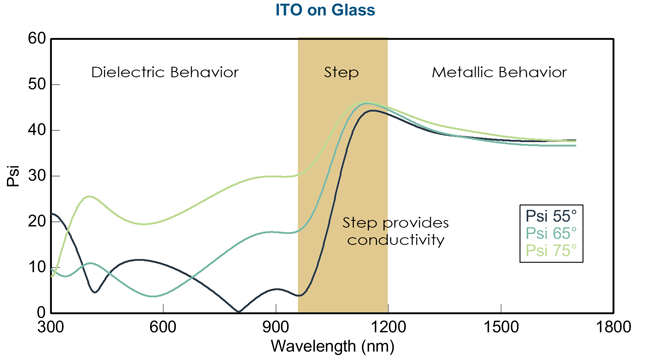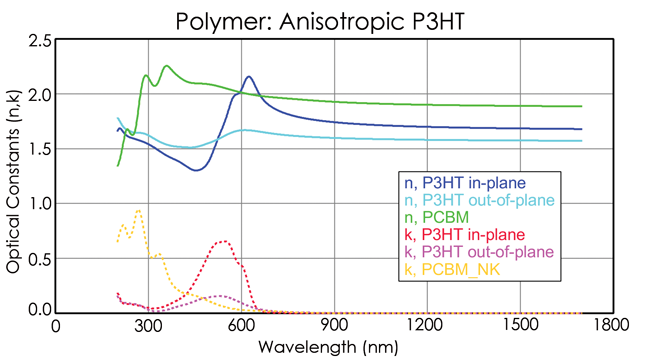The M-2000® is a versatile spectroscopic ellipsometer, suited to many different sample types. Coatings can be dielectrics, organics, semiconductors, and even thin metals.
Optical Coatings
Characterize both thickness and refractive index for single- and multi-layer coatings; anti-reflection, high-reflection, or decorative coatings. Calculate the color coordinates for your coating stack under different lighting conditions.
Chemistry/Biology
The M-2000 can be used for a variety of chemical and biological applications, either as a stand-alone tool or in combination with one of our many accessories. Study materials under liquid ambient, at high or low temperatures, or in conjunction with QCM-D measurements.

Glass transition of polystyrene.

QCM-D Cell on M-2000 Ellipsometer.
Conductive Organics
Great progress has occurred in the area of organic layers and stacks used for display (OLED) or photovoltaic applications. There are many different materials being studied, from small molecules such as Alq3 to conjugated polymers such as P3HT. Often multiple materials are blended together – which requires the wide spectral range of the M-2000 – to probe different wavelengths where the organics are optically different. Long-chain molecules may also have significant anisotropy, where orientational stacking of the polymer chains produces different optical constants in different directions.
Semiconductors
Traditional ellipsometry applications are still going strong. Characterize any semiconductor material: resists, photomasks, SiON, ONO stacks, low-k dielectrics, high-k gates, SOI, SiGe, II-VI and III-V ternary and quaternary compounds.
Photovoltaics
Film thickness and optical properties are critical to performance of solar devices. Ellipsometry is used for development and monitoring of all PV materials: a-Si, μc-Si, poly-Si, AR Coatings (SiNx, AlNx…), TCO Films (ITO, ZnOx, doped SnO2, AZO), CdS, CdTe, CIGS, organic PV materials, and dye sensitized films.

Transparent conductive oxides appear metallic at long wavelengths and dielectric in the visible. The M-2000 can gather info about the film from both of these regions.

ITO conductivity is related to NIR absorption.
In-Situ
The M-2000 is ideal for in-situ monitoring and process control. It is used successfully with a number of different processes to provide real-time results:
| MBE | Sputter | ALD | E-beam evaporators |
| MOCVD | PECVD | Plasma etch | ECR |
| Liquid Cells | Temperature Stages | Cryostat |





